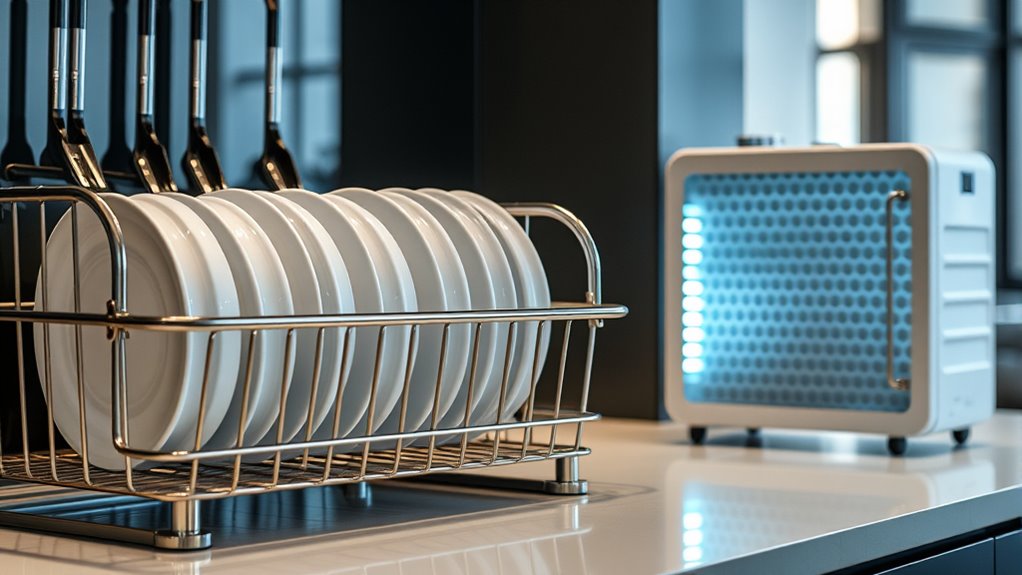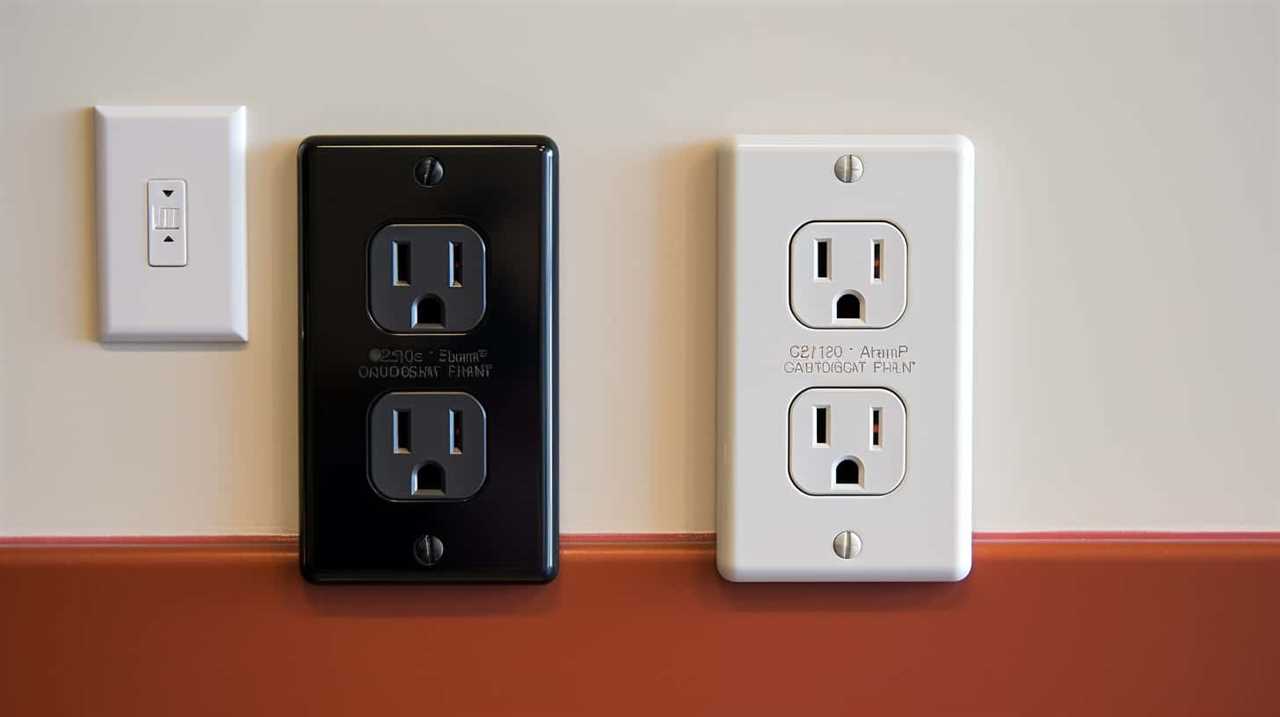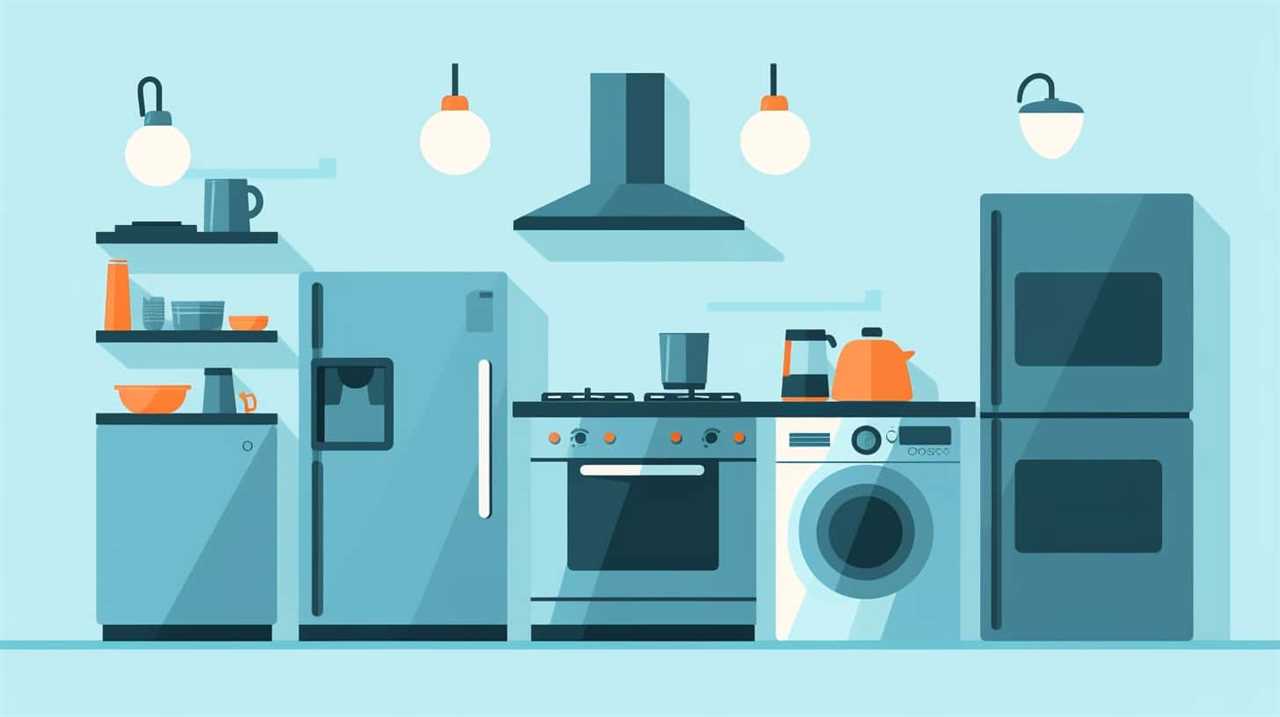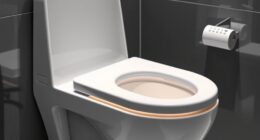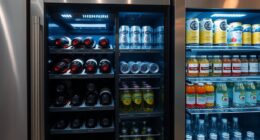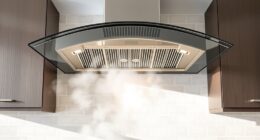Advanced dish drying uses zeolite and heat-exchanger methods to boost efficiency and drying speed. Zeolite absorbs moisture and releases heat naturally, while heat exchangers recover exhaust heat to preheat incoming air. Combining these technologies creates a continuous, energy-saving drying process that’s gentle on delicate items and reduces energy costs. This innovative approach minimizes water and electricity use. If you stay tuned, you’ll discover how these systems work together for ideal results.
Key Takeaways
- Zeolite technology absorbs moisture and converts it into heat, enabling efficient and natural dish drying with minimal energy use.
- Combining zeolite dehumidification with heat exchangers recovers exhaust heat, enhancing overall drying efficiency.
- Zeolite systems are self-regenerating, requiring minimal maintenance while providing consistent drying performance.
- Integration of heat recovery and zeolite dehumidification reduces energy consumption compared to traditional drying methods.
- Precise control of temperature and humidity optimizes drying speed, preserves delicate items, and improves system efficiency.
Understanding Zeolite Drying Technology
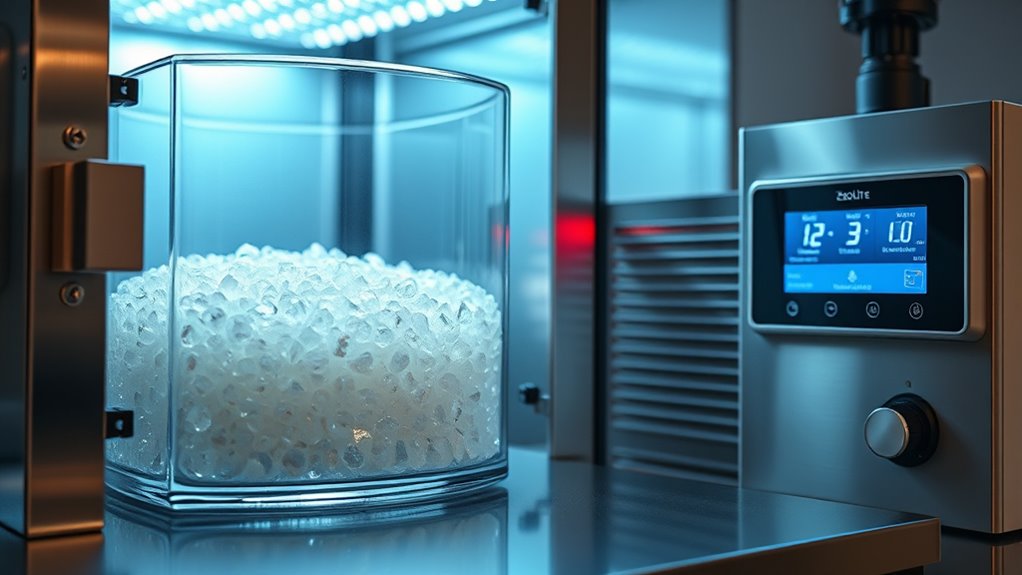
Understanding zeolite drying technology begins with recognizing that zeolites are crystalline aluminosilicates composed of silicon, aluminum, and oxygen, arranged in a porous lattice network. This structure creates a high internal surface area, allowing you to adsorb significant moisture. When moisture-laden air passes through, the zeolite traps polar molecules like water, effectively drying the air while leaving non-polar substances unaffected. The process generates heat, raising the temperature of incoming air after passing through the zeolite. Zeolites are thermally stable, maintaining their structure across various temperatures, making them suitable for diverse drying conditions. Their ability to selectively adsorb water and withstand heat enables efficient, reliable moisture removal without degrading the material, supporting continuous operation in multiple applications. Additionally, the integration of automation technologies can optimize zeolite regeneration cycles, enhancing overall efficiency. This thermal stability also allows for regeneration processes to be performed repeatedly without loss of performance.
Comparing Zeolite and Heat Exchanger Systems
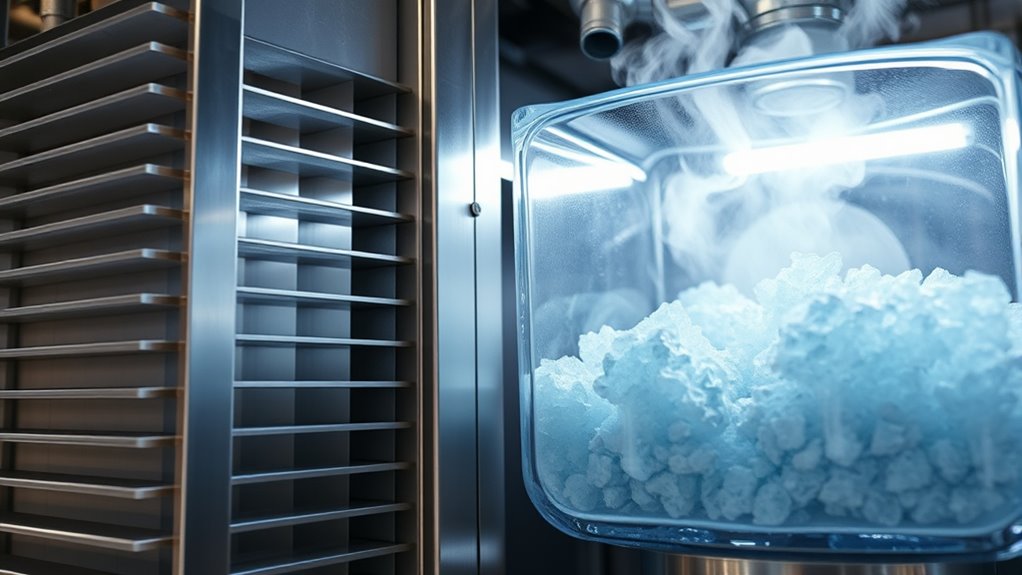
When comparing zeolite and heat exchanger drying systems, it’s essential to take into account their energy efficiency, operational mechanisms, and suitability for different applications. Zeolite drying boosts energy efficiency by 10-18% through adsorption and heat recovery, converting moisture into heat internally and reducing external energy needs. It offers gentle, uniform drying ideal for plastics and medium-temperature applications. Zeolite technology utilizes natural mineral Zeolite for moisture absorption and heat conversion, making it a sustainable choice. Heat exchangers recover heat from exhaust air to preheat incoming air, enhancing thermal efficiency but often involving multistage processes and external control systems. They excel in industrial food drying where process flexibility and heat recovery are critical. Zeolite systems are self-regenerating with minimal maintenance, while heat exchanger setups require periodic upkeep and more complex installation. Your choice depends on application needs, energy goals, and maintenance considerations.
Components and Workflow of Zeolite-Based Drying
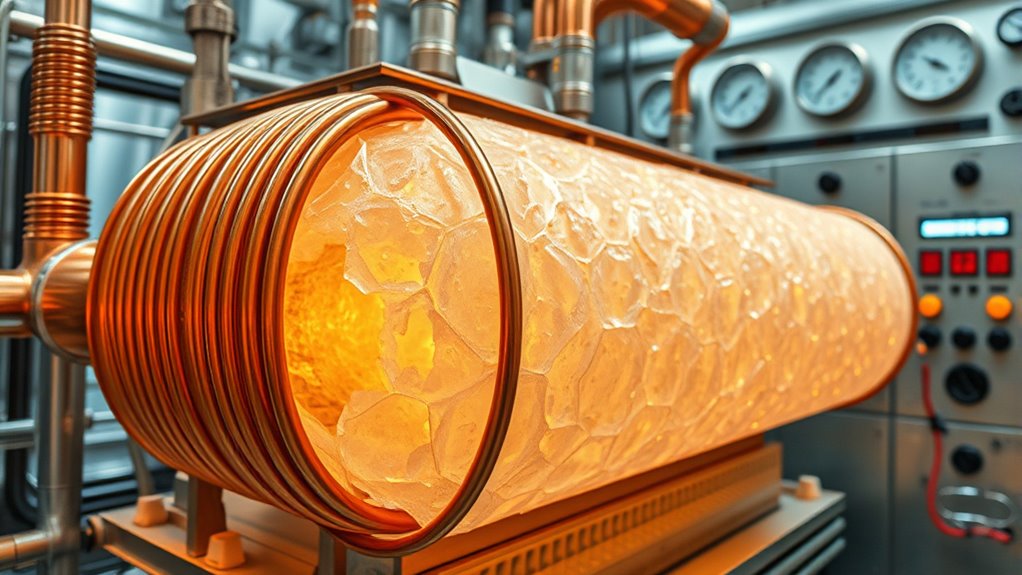
The components and workflow of a zeolite-based drying system are designed to maximize energy efficiency and simplify operation. You’ll find a granular zeolite chamber at the dishwasher’s base, separated from direct dish contact but exposed to humid air. This chamber contains the porous mineral responsible for moisture adsorption and heat release. During the drying cycle, hot, humid air rises inside the dishwasher and’s drawn into the chamber, where moisture is absorbed by the zeolite. This process generates heat, warming the air. The dry, heated air is then circulated back into the dishwasher, accelerating drying. The system is self-regenerating; during each wash cycle, heat drives off moisture from the zeolite, ensuring long-term, maintenance-free operation. Efficient airflow and heat exchange optimize drying performance without extra energy input. Additionally, sound healing science suggests that integrating specific frequencies can further enhance the efficiency of such systems by promoting cellular regeneration and overall health.
Advantages of Zeolite Over Traditional Methods
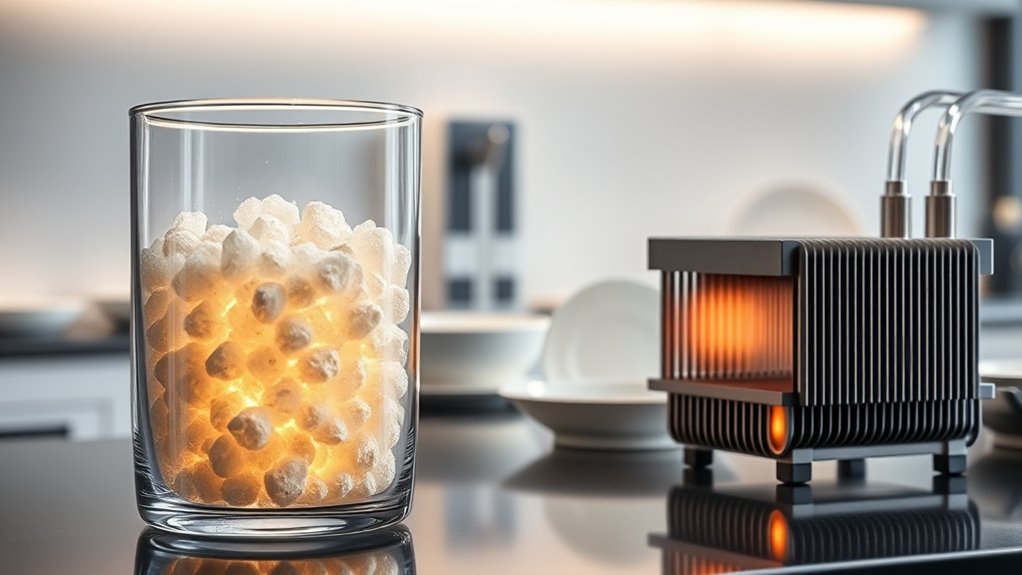
Zeolite technology offers significant advantages over traditional drying methods by dramatically reducing energy consumption and improving efficiency. It uses the mineral’s natural ability to store and release heat during moisture adsorption, decreasing reliance on electric heating elements. This process converts moisture into heat, making drying more targeted and precise, unlike conventional methods that heat all the air uniformly. Zeolite’s recycling of heat results in lower operating temperatures, saving water and electricity. It also delivers superior drying performance, including better results with challenging items like plastics, and creates a gentler environment that minimizes damage to delicate dishes. Additionally, since zeolite is non-toxic and naturally regenerates, it’s environmentally friendly and reduces waste. Its quieter operation and shorter cycles further enhance user experience, setting it apart from traditional drying techniques. Furthermore, the integration of smart sensors in some advanced dryers can optimize the drying process by adjusting heat and airflow based on real-time conditions, enhancing overall efficiency.
Integrating Zeolite and Heat Exchanger Solutions
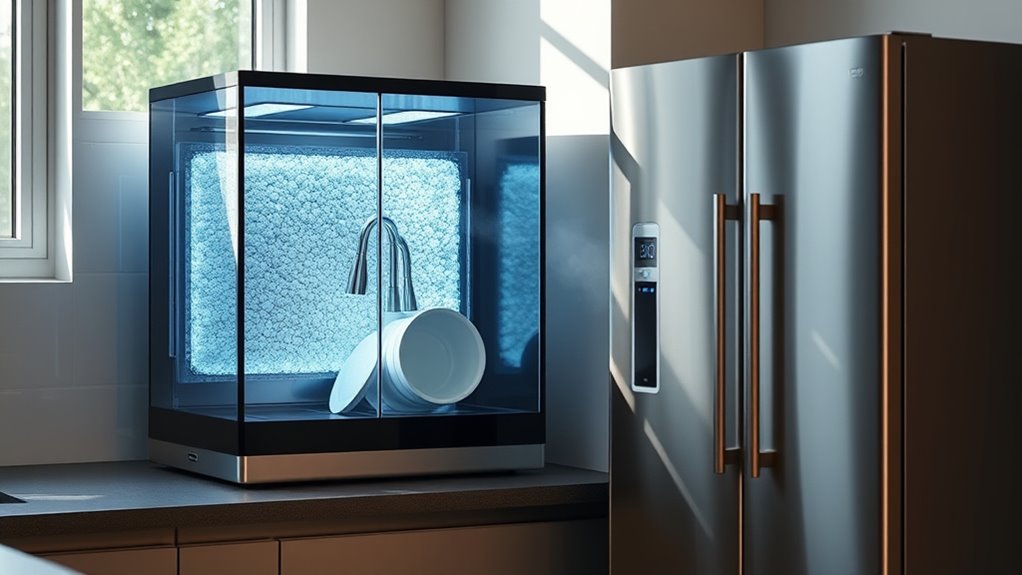
Integrating zeolite with heat exchanger solutions enhances the overall efficiency of the drying process by effectively recovering and reusing thermal energy. You can maximize energy use through process integration, boosting efficiency and reducing costs. Zeolites dehumidify at low temperatures, while heat exchangers capture heat from exhaust streams for reuse. This synergy allows continuous operation with minimal energy loss. The table below illustrates key components involved:
| Component | Function | Benefit |
|---|---|---|
| Zeolite Adsorber | Removes moisture from air | Low-temp dehydration |
| Regeneration Unit | Heats zeolite to release water | Restores adsorption capacity |
| Heat Exchanger | Recovers heat from exhaust stream | Enhances energy efficiency |
| Drying Chamber | Drys products using dehumidified air | Improved drying quality |
| Control System | Manages temperature and moisture levels | Ensures ideal operation |
A critical factor in optimizing this system is precise control of temperature and humidity levels to maintain efficient drying performance.
Frequently Asked Questions
How Long Does the Zeolite Drying Cycle Typically Last?
The zeolite drying cycle typically lasts longer than quick cycles like varioSpeed, usually taking around 1 to 2 hours. You’ll notice it’s a bit more time-consuming because zeolite provides thorough drying, especially for plastics. While it may seem longer, this method guarantees excellent, consistent results and energy efficiency. If you’re patient, you’ll appreciate how well your dishes dry, especially delicate or moisture-retentive items.
Can Zeolite Technology Be Repaired or Refurbished?
Yes, you can repair or refurbish zeolite technology. You’ll need to select appropriate regeneration methods like thermal, chemical, or physical techniques based on the contaminants and zeolite type. Regular maintenance involves heating, purging, or chemical treatments to restore adsorption capacity. Keep in mind, repeated cycles may cause some degradation, so monitor the structure and performance to guarantee continued effectiveness and extend the lifespan of your zeolite system.
Are There Specific Maintenance Requirements for Zeolite Chambers?
You should perform annual inspections, as they help catch issues early—sediment buildup and moisture can reduce adsorption capacity by up to 50%. During inspections, check the chamber’s structural integrity, monitor sediment levels, and sample media for contamination. Regular cleaning, media replacement, and proper regeneration are essential. Keep the chamber environment resistant to acids and moisture, and ensure easy access for maintenance, extending the system’s lifespan and efficiency.
What Environmental Factors Influence Zeolite’s Drying Efficiency?
Environmental factors like ambient temperature, humidity, and airflow crucially influence your zeolite’s drying efficiency. Warmer air up to about 70°C boosts adsorption, while high humidity levels can saturate zeolite faster, reducing its effectiveness. Proper airflow ensures maximum contact between moist air and zeolite, enhancing moisture removal. You should control these conditions to optimize drying speed, energy use, and regeneration, maintaining consistent performance in your drying system.
Is the Zeolite Mineral Reusable After Saturation?
A stitch in time saves nine, and the same applies to zeolite reuse. Yes, you can reuse zeolite after saturation by heating it to drive off the absorbed water, restoring its drying capacity. Just guarantee the temperature stays within its structural limits to prevent damage. Proper regeneration maintains its porosity and ion-exchange capacity, allowing you to use it repeatedly without significant loss in efficiency.
Conclusion
By combining zeolite and heat exchanger methods, you can boost drying efficiency by up to 30%, saving energy and reducing costs. Imagine cutting your drying time in half while maintaining product quality—that’s the power of advanced technology. Embracing these solutions not only streamlines your process but also offers sustainable benefits. With such impressive stats, it’s clear that upgrading to zeolite and heat exchanger systems can transform your dish drying approach dramatically.
